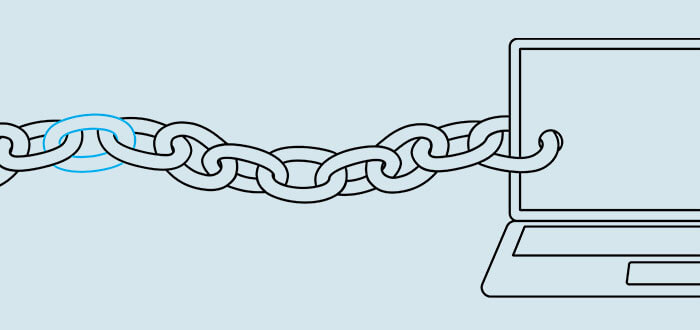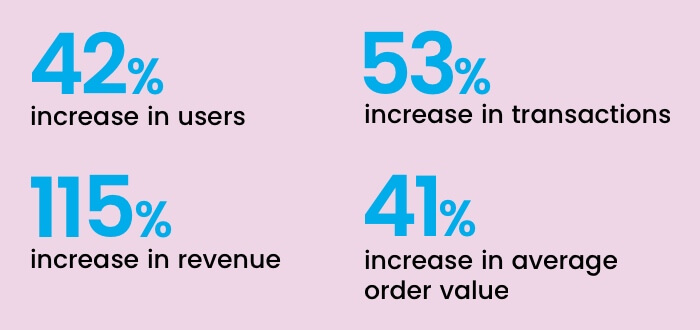Penguin 4.0 however will be the last, as it is now calculated in real-time within the core Google Search algorithm. But what does this mean for your website’s SEO, and how should you adapt your link building campaigns to ensure you can continue to improve your visibility in search?
Algorithm changes are harder to interpret
Because Penguin 4.0 is now in real-time, there will no longer be mass-penalties for websites that fall foul of the new rules following a single swing of the axe, as was the case with previous updates between 2012 and 2014.
The impact of this is twofold. In one sense, this is good for marketers and webmasters as no longer could your site be wiped out of Google overnight thanks to an over-zealous algorithm update.
On the other hand, however, this new set up means if your website is subject to an algorithmic penalty, it could be harder to detect.
Google’s Penguin 4.0 is now granular, meaning it can impact any level of a site – the domain, specific folders, individual pages, or even keywords and specific topics. As Penguin 4.0 is part of the algorithm, it can affect organic rankings on a fine level. This means penalties can impact separate sites pages on the site, not the whole domain in general.
The result of this is that it could now be harder to diagnose ranking issues due to the negative effect of poor quality links – it may no longer be as simple as comparing total organic traffic before and after the date of a known Penguin update.
What to look out for
Because Penguin 4.0 can target different sub-sections of your site based on what links point to those pages, it can mean that specific pages that have been subjected to aggressive link building in the past could trip the Penguin filter and have their rankings suppressed, while other pages continue to do just fine.
This means you need to take a closer look at all the factors that could affect the rankings of certain pages. For example, imagine you have two pages appear equally well optimised for their respective keywords, however, one is ranking on page one and the other is on page 3. This is when it’s worth analysing your site’s backlinks.
Imagine each link to your site as a vote of confidence. By looking at your backlinks with a tool called Majestic, you can analyse how many sites are linking to you, categorising them not just by their SEO metrics, but also by how much authority they have on particular topics.
If a site has a high topical authority on a subject, this means Google is likely to place a high value on that link because the writers on this site obviously know what they’re talking about – they’re experts on that topic.
Meanwhile you could have hundreds of links from other sites with low topical authority. This would indicate they’re not particularly trusted resources on that topic – so their vote of confidence for your site is worth much less, or may actually detract from your site’s credibility.
The result is that getting a handful of links from leading websites in your industry, which themselves have links from other quality sites, has a stronger impact on your site than countless links from low quality sites.
Going back to your two pages, by looking at the data in Majestic, you may find that the reason your low-ranking page is underachieving is because your site has many low-quality links pointing to it from sites that cover that page’s topic – but do it badly. Meanwhile, your high performing page could have a handful of links from a small number of respected sites in their field, which although fewer in number, are worth exponentially more.
How to devise a link building strategy for 2017
So how does this all affect your SEO strategy for 2017? The first thing you should do this year is to audit your backlinks. There’s a range of tools that you can use – Link Research Tools, Link Detox, Majestic, Ahrefs, Linkdex and many more. It’s time for a good clear out of any toxic links that, based on your analytics data, could be hindering your search rankings.
Next, it’s essential to re-focus your link building strategies in the right areas. Obtaining hundreds of low quality links isn’t the most effective way to grow your brand’s reach on search – and as we’ve seen, it can in fact negatively affect your rankings.
With that in mind, here’s three principles you should consider for your link building campaigns in 2017:
What do you have?
A prerequisite for gaining links from high quality sites is to have great quality content on your own site. To persuade webmasters and editors to link to you, you need to have content that’s genuinely worth linking to, and in 99% of cases, this won’t be your services or product pages.
Instead, you need to invest in high quality editorial content. What can you write that others cannot? For example, could you publish a survey on the state of your industry? New research on an important issue that matters to your customers? Or other insights that are of genuine interest to others in your industry?
Not only will investing in quality content make it much easier to persuade influencers to link to you, it also means you can begin to earn links organically, for example when other writers are researching a topic and need to cite a resource in their piece.
What can you offer?
The next principle is making sure you have some unique assets to offer to the websites you’re looking to get links from. If they’re a big editorial site with a team of content writers at their disposal, why should they publish a piece of content by you?
To be successful, your content needs a USP – what can you bring to the table that their internal team cannot? For example, could you provide some exclusive research that makes a great news story? Could you give them an expert opinion or comment on the state of your market? Or do you have respected individuals in your organisation, such as a high-profile CEO or founder, whose by-line would add value to a guest article on a leading editorial site?
And how can you do it?
Finally, think about how your outreach is conducted. Getting a link from a respected editorial site can be a long drawn out process, so be prepared to put in the groundwork to build a relationship with editors. You may not get a link from their site straight off the bat, but putting in the effort to check in every so often and get back in touch with new stories until there’s a fit is worth it. It all pays off in the end!
Ensure the people working on your link building team have a great approach to outreach emails. Rather than sending out a non-personalised template email, ensure each is tailored to the editor you want to reach, which can only be done through thorough research. Editors of leading sites get countless emails per day – how can yours stand out amongst the noise?
Wrapping up
Make it your new year’s resolution to ensure your site’s backlinks are in order, and to assess whether your link building and outreach strategy cuts the mustard. Need some help in planning an outreach campaign that works for your industry? Why not get in touch!


